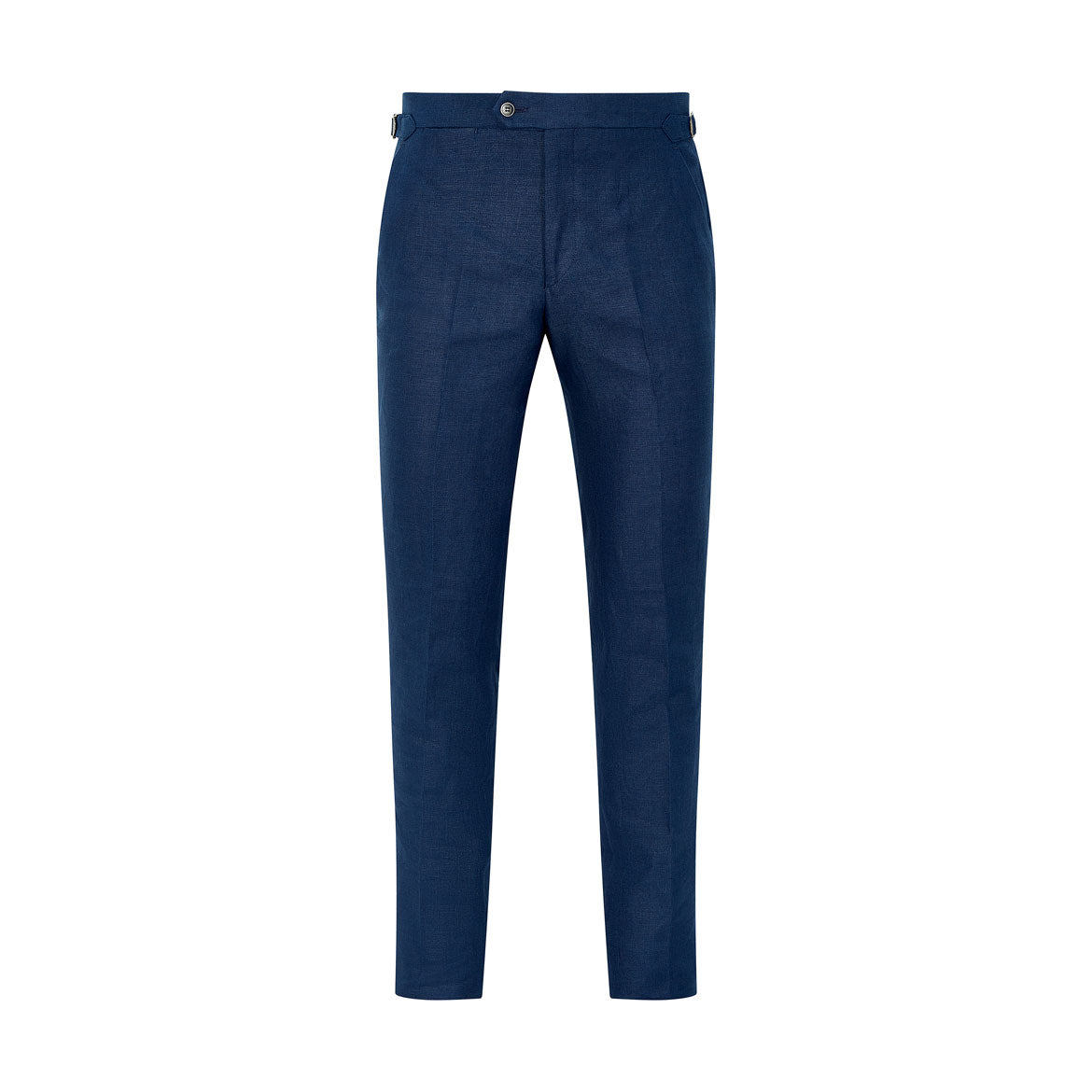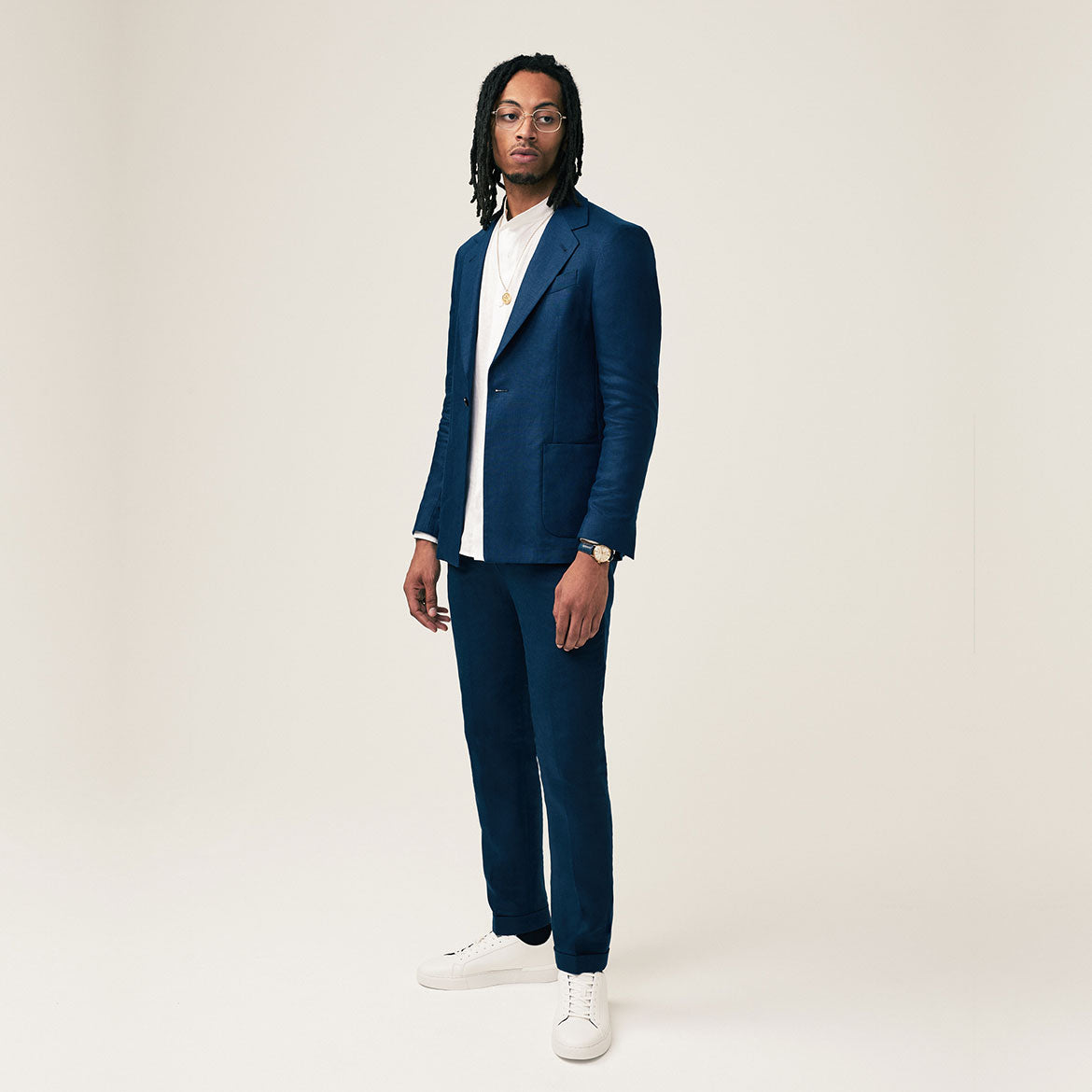






Navy Blue Linen Suit Trouser - Jodhpur Blue
Studio Notes
The Chela Trouser is created using plain weave 228gsm pure linen, and is hand cut and crafted by our atelier in Tuscany.
The Chela trouser represents understated elegance by combining inherently bespoke qualities with relaxed structure making this trouser a perfect and versatile choice for your wardrobe and suitcase.
The trousers come with side adjusters and an ‘after dinner split’. The hem is unfinished so that they can be altered to your desired inseam, with a fabric allowance for a generous turn up.
Matching style Chela Linen Jacket available. Fits true to size.
Origin: Tuscany, Italy
Content: 100% Linen, Cupro lining
Choose options






